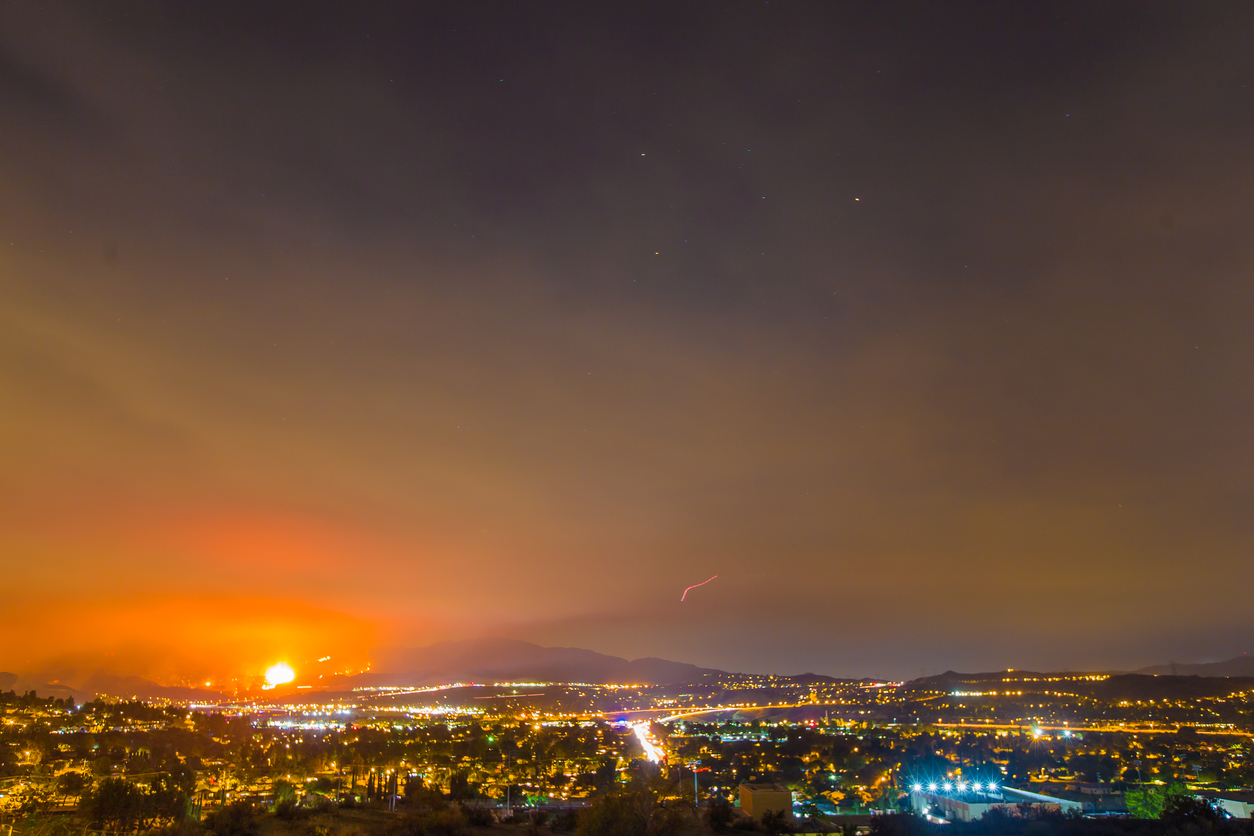The bill passed Friday night in the final hours of California’s legislative session would give PG&E Corp. a path to pass on to ratepayers legal damages and other costs stemming from fires that swept California’s wine country in October. The blazes killed more than 40 people and destroyed or damaged about 21,000 homes and 2,800 businesses.
Democratic California Gov. Jerry Brown is expected to sign the measure, addressing a broad array of wildfire-related issues, into law. But that is unlikely to end controversy over how much PG&E customers should pay for what critics call the utility’s failure to invest in maintenance and safety measures in a state prone to severe fire risk.
State investigators have so far concluded that equipment from PG&E’s Pacific Gas & Electric Co. unit caused 16 of last year’s blazes, and the utility has said it expects to incur losses related to at least 14 of them. PG&E faces at least 780 civil lawsuits brought by individuals, municipalities and insurance companies alleging it was negligent and seeking to recoup money for fire-related damage and deaths.
PG&E provides electricity and natural gas to about 16 million people living in Central and Northern California. It has cut its dividend and took a $2.5 billion charge in the second quarter related to claims made against the utility in connection with the wildfires.
Some analysts have pegged PG&E’s potential liability from the 2017 fires at as much as $15 billion. The utility currently has less than $900 million in insurance to help pay for wildfire liability. It has said it is looking at other insurance coverage options but that increases will likely come at a higher price, as carriers have “significantly” raised premiums.
S&P Global Ratings has said continued liability concerns related to the wildfires could push PG&E and its peers in California below investment grade.
The provisions lawmakers approved Friday would “meaningfully alleviate the potential risk of bankruptcy or utility instability arising from exposure to both future and some past wildfires,” said analysts at ClearView Energy Partners LLC.
PG&E called it a “common-sense solution” that “addresses many urgent needs.”
Still, the measure generated considerable debate, and California lawmakers are expected to continue debating wildfire liability issues in the state’s next legislative session.
Sen. Bill Dodd, a Democrat from Napa who crafted the bill, said it would shield utility ratepayers from potentially higher costs that could come if a utility declares bankruptcy. Sen. Jerry Hill, a Democrat from San Mateo, disagreed, saying ratepayers shouldn’t be charged for what he saw as PG&E’s mismanagement.
“Why are we rushing to bail out PG&E with its history of cutting safety as a business decision?” Mr. Hill said. “Did taxpayers bail out BP [PLC] after the Gulf [of Mexico] oil spill? No.”
Critics said ratepayers shouldn’t be made to cover wildfire damages, especially if a utility’s equipment is shown to have sparked that fire as a result of improper maintenance. Mark Toney, executive director of consumer-advocacy group The Utility Reform Network, called it a “corporate criminal bailout” and said he and others will urge Mr. Brown to veto the bill.
The 2017 wildfires aren’t the first time PG&E’s safety practices have come under scrutiny. The utility was slapped with $1.6 billion in civil and criminal fines following a natural-gas pipeline explosion that killed eight people in San Bruno, Calif., in 2010.
It was fined $8.3 million last year in connection with a 2015 blaze called the Butte fire that killed two people and destroyed hundreds of homes after a tree fell on a power line. Regulators said PG&E had failed to identify as dangerous the tree that started the fire.
Many of the 2017 fires already investigated appeared to have been caused by trees or branches falling into power lines, state officials said.
Friday’s bill reduces the risk of a PG&E bankruptcy, likely avoiding a repeat of what occurred in 2001, when the utility sought bankruptcy protection during the state’s electricity crisis after rescue talks with state elected leaders broke down.
But the bill stopped short of addressing the root issue that poses risk for state utility companies: a state liability rule known as inverse condemnation that allows compensation for property damage caused by government entities or state actors.
“While the bill includes some constructive elements, further work is required to adequately reform policies on how the state addresses wildfire prevention, response and liability,” said Pedro Pizarro, chief executive of Edison International , EIX +1.89% the parent of Southern California Edison.
Still, it gives utilities a clearer path to recover wildfire-related costs by issuing bonds paid off by customer surcharges—provided that state regulators determine the companies acted reasonably in designing, maintaining and operating their equipment, anticipating and monitoring fires, and mitigating fire risks.
Utilities wouldn’t be allowed to recover fines or penalties from ratepayers. Specific to the 2017 fires, the bill requires regulators to come up with a stress test to determine the maximum amount a utility could pay “without harming ratepayers or materially impacting its ability to provide for adequate and safe service.”
Any additional amount could be passed on to ratepayers. PG&E estimates an average residential customer would pay about $5 a year for every $1 billion in bond debt.
Addressing more frequent and devastating wildfires was a priority for California legislators following last year’s wildfires, and another outbreak of historically significant fires this year. The bill would also allocate $1 billion over five years from a state fund to go toward forest-management programs to help reduce wildfire fuel.
Assembly Republican Leader Brian Dahle said legislators wanted to ensure utilities paid a fair share for wildfire damages but wouldn’t be financially devastated by that obligation.
“If you do nothing, they will go bankrupt,” Mr. Dahle said. “If you do something to keep them from that, it’s a step in the right direction.”













